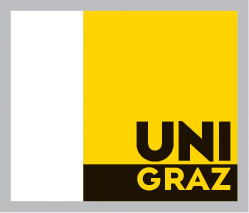All Papers
TEI encoding of correspondence: A community effort
Stefan Dumont, Susanne Haaf, Sabine Seifert
Keywords: TEI encoding, letters, correspondence
Slides: https://drive.google.com/open?id=1oZCDWOQa2DMjpNPVnI_oIe6Z85LVfIka
Permalink: https://gams.uni-graz.at/o:tei2019.128
TEI encoding of correspondence: A community effort
Stefan Dumont, Susanne Haaf, Sabine Seifert
As conveners of the TEI Correspondence SIG and representative for the DTA Base Format, we were repeatedly asked about the TEI encoding of correspondence-specific phenomena. Although the TEI Guidelines contain suggestions, there are still open questions on how to deal with several structural and textual occurrences. This situation led to the idea of holding a workshop to discuss problematic cases of correspondence encoding in TEI, and to develop solutions as well as potential extensions to the TEI.
The workshop was funded by CLARIN-D and was held in October 2018 in Berlin (Germany). We invited early-carrier researchers who deal with TEI encoding and/or correspondence encoding in the course of their daily work, as well as one member of the TEI Council for advice on proposals for TEI extensions. From the participants, we gathered examples of insecurities or problems with applying TEI to correspondence texts beforehand and dealt with these in the workshop.
All problems discussed concern aspects of letter coding: from letter-specific text structures to correspondence metadata. To name but a few, problems with <postscript> or <salute> were treated as well as the use of <correspDesc> for specific correspondence situations. The Correspondence Metadata Interchange Format was also developed further.
Following the workshop, the problems, discussions, and solutions were summarized as handbook-like articles by the workshop participants. The publication “Encoding Correspondence. A handbook on encoding correspondence in TEI-XML and DTABf” will be released step by step as Open Access from July 2019 on with the possibility for the community to review and comment.
In our talk, we want to present this initiative. We will outline the fields of correspondence encoding which were discussed and feature some interesting cases and their solutions. We will also present the course of action applied which to us seemed to evoke fruitful discussions on TEI encoding.
Bibliography
Stefan Dumont, "correspSearch – Connecting Scholarly Editions of Letters", Journal of the Text Encoding Initiative [Online], Issue 10 | 2016, Online since 14 February 2018, connection on 02 April 2018. URL : http://journals.openedition.org/jtei/1742 ; DOI : 10.4000/jtei.1742
Susanne Haaf, Christian Thomas, "Enabling the Encoding of Manuscripts within the DTABf: Extension and Modularization of the Format", Journal of the Text Encoding Initiative [Online], Issue 10 | 2016, Online since 08 August 2017, connection on 27 September 2017. URL: https://journals.openedition.org/jtei/1650; DOI: 10.4000/jtei.1650.
Peter Stadler, Marcel Illetschko, and Sabine Seifert, "Towards a Model for Encoding Correspondence in the TEI: Developing and Implementing <correspDesc>", Journal of the Text Encoding Initiative [Online], Issue 9 | September 2016 - December 2017, Online since 24 September 2016, connection on 02 April 2018. URL : http://journals.openedition.org/jtei/1433 ; DOI : 10.4000/jtei.1433

